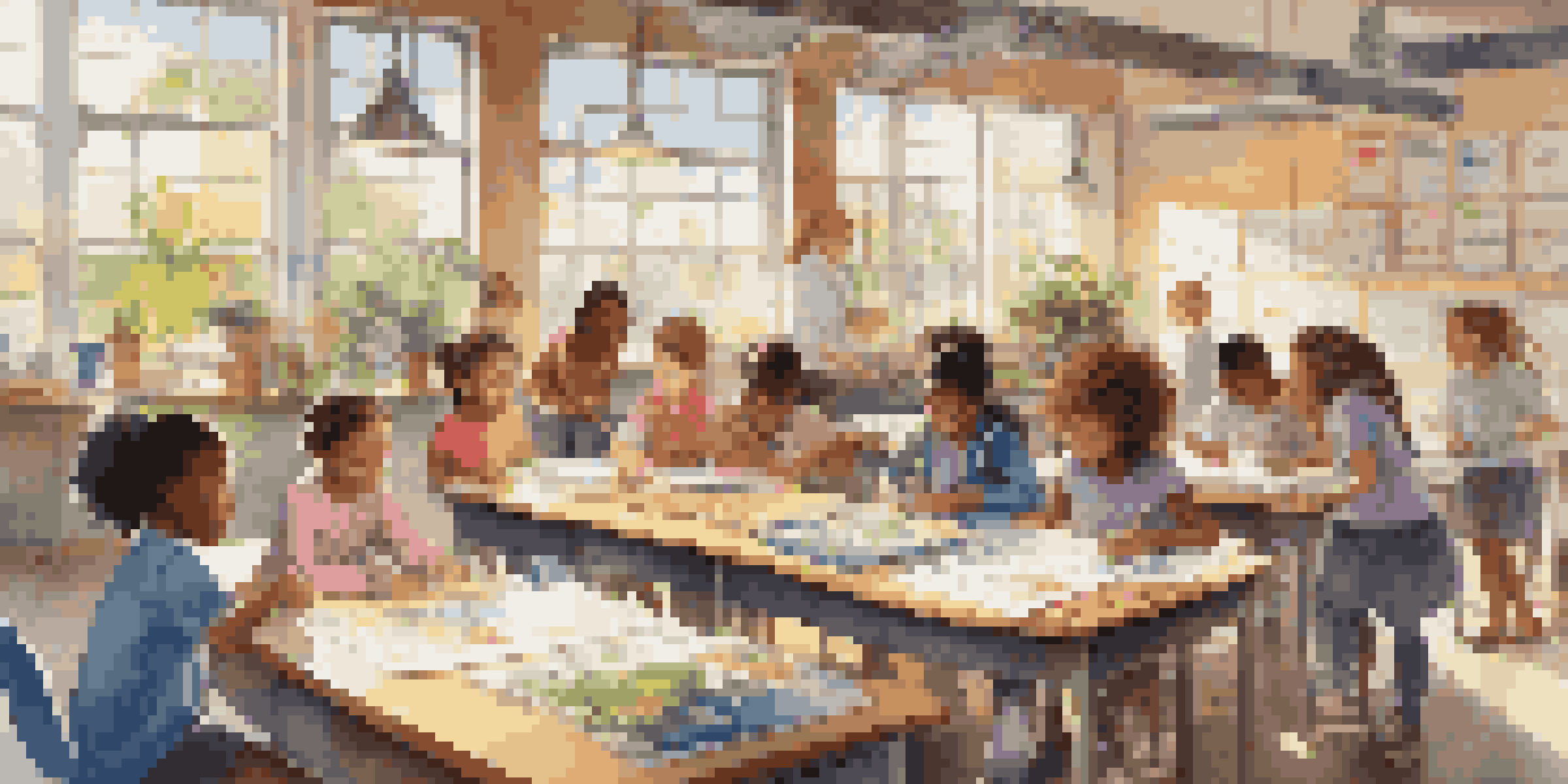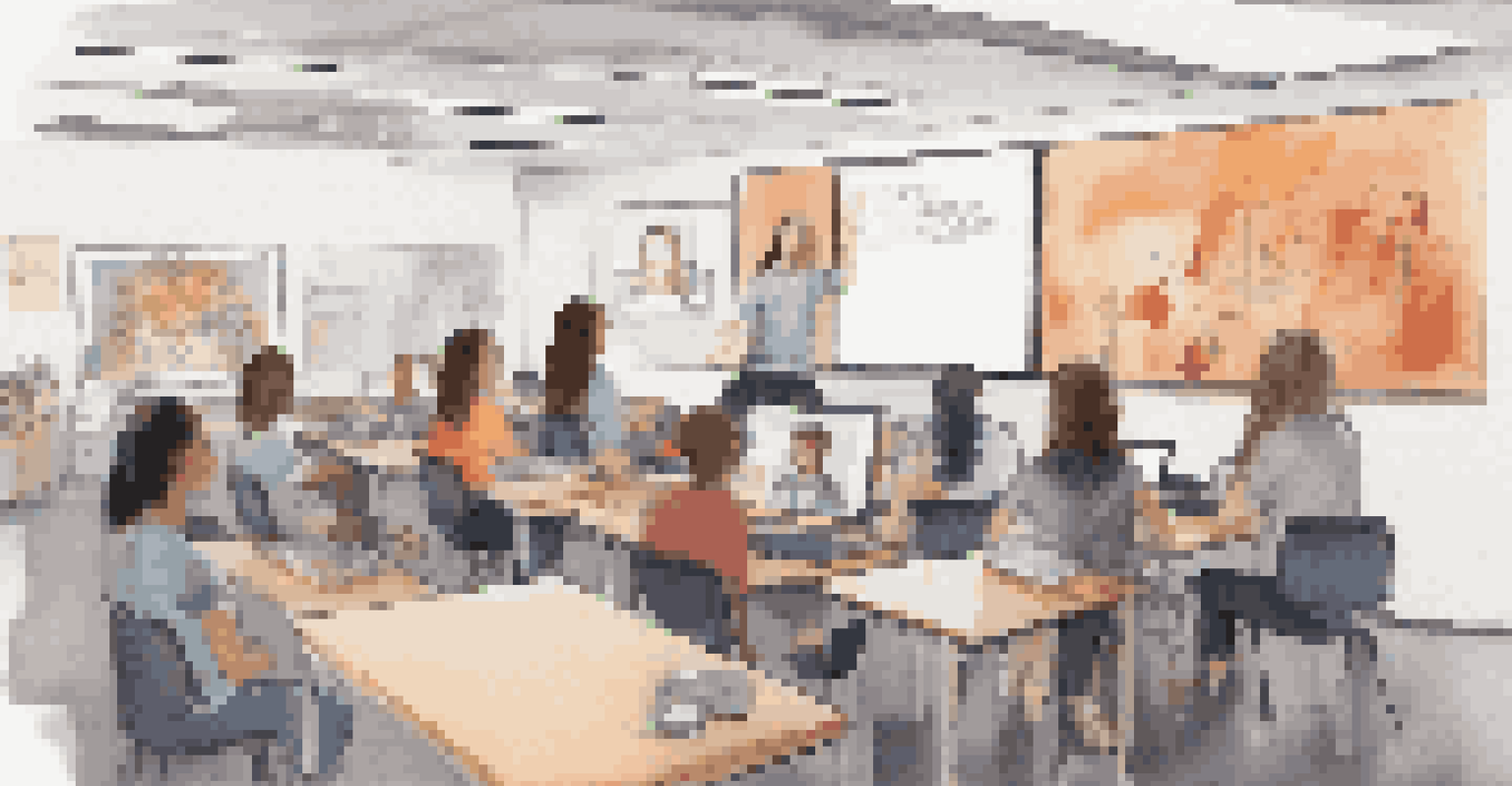Social Learning Theory: Lessons from Educational Psychology

Understanding Social Learning Theory: A Brief Overview
Social Learning Theory, developed by Albert Bandura, emphasizes the role of observation in learning. It suggests that people can learn new behaviors by watching others, rather than through direct experience alone. This theory shifts the focus from traditional learning methods to a more social perspective, highlighting the importance of interaction.
I am not a product of my circumstances. I am a product of my decisions.
For instance, think about how children learn to speak; they mimic the sounds and words they hear from adults and peers. This imitation is a fundamental aspect of Bandura's theory, illustrating that much of our learning occurs in a social context. As such, understanding this theory can provide valuable insights into effective teaching strategies.
In educational settings, Social Learning Theory can inform practices that encourage collaborative learning. When students engage with one another, they can observe and adopt various skills and behaviors, enhancing the learning experience. This approach not only fosters individual growth but also builds a sense of community among learners.
The Role of Observation in Learning Processes
Observation is a cornerstone of Social Learning Theory, allowing individuals to learn without direct experience. This process occurs through four key components: attention, retention, reproduction, and motivation. Each of these elements plays a crucial role in how effectively one can learn from observing others.

For example, a student who watches a classmate solve a math problem pays attention to their methods. By retaining that information and practicing the same technique, they can reproduce the outcome. However, motivation is key; if the observer believes they can succeed, they're more likely to engage with the learned behavior.
Observation is Key to Learning
Social Learning Theory emphasizes that individuals can learn new behaviors by observing others in their environment.
In classrooms, teachers can leverage this by modeling desired behaviors and skills. When students see their peers succeed through specific strategies, they may feel motivated to try those same approaches, enhancing their overall learning experience. This creates a dynamic where learning becomes a shared journey.
Bandura’s Bobo Doll Experiment: Key Insights
One of the most famous studies supporting Social Learning Theory is Bandura's Bobo Doll experiment. In this study, children observed adults interacting aggressively with an inflated doll, and later, they imitated that behavior. This highlighted how exposure to aggressive models could lead to similar actions in observers.
We learn from failure, not from success!
The experiment demonstrated that children are not passive learners; they actively absorb and replicate the behaviors they witness. This finding has profound implications for understanding how children learn social norms and behaviors, particularly aggression and cooperation.
Moreover, the Bobo Doll experiment emphasizes the responsibility of educators and caregivers. By being aware of the behaviors they model, adults can positively influence children's learning and development. It serves as a reminder that our actions often speak louder than our words.
The Importance of Reinforcement in Learning
Reinforcement plays a significant role in Social Learning Theory, acting as a motivator for behavior. Positive reinforcement, such as praise or rewards, can encourage individuals to repeat observed behaviors, while negative reinforcement may discourage certain actions. This dynamic helps shape future learning experiences.
For instance, if a teacher praises a student for collaborating effectively with peers, it reinforces that behavior, making it more likely to occur again. Similarly, if a student observes a classmate receiving a reward for their participation, they may be motivated to engage in similar ways.
Reinforcement Shapes Behavior
Positive and negative reinforcement plays a crucial role in encouraging or discouraging behaviors learned through observation.
Thus, understanding the impact of reinforcement allows educators to create more effective learning environments. By strategically applying reinforcement, teachers can guide student behavior and foster a culture of positive learning. This approach not only benefits individual students but also enhances the classroom community.
Social Learning Theory and Technology in Education
In today's digital age, technology has transformed the landscape of education, making Social Learning Theory more relevant than ever. Online platforms encourage collaboration and observation among students, allowing them to learn from one another in innovative ways. This shift provides new opportunities for engaging with the learning process.
For example, consider how students use video tutorials to learn new concepts. By observing an expert demonstrate a skill, they can replicate the process, reinforcing their understanding. Additionally, forums and discussion groups allow students to share insights, creating a vibrant learning community.
Integrating technology into education not only supports Social Learning Theory but also meets the needs of diverse learners. By facilitating interactions and observations online, educators can foster a more inclusive environment that promotes collaboration and growth.
Application of Social Learning Theory in Classrooms
Applying Social Learning Theory in classrooms involves creating environments that encourage observation and collaboration. Teachers can design group activities where students can work together, share ideas, and learn from each other. This approach not only enhances individual learning but also builds social skills.
For example, a science project that requires teamwork allows students to observe their peers' problem-solving strategies. They can adopt these methods and develop their own skills in the process. This experiential learning not only deepens understanding but also fosters a sense of belonging.
Technology Enhances Collaborative Learning
Incorporating technology in education fosters collaboration and observation among students, making Social Learning Theory more relevant.
Ultimately, the application of this theory encourages a more active learning process. By shifting from traditional teaching methods to more interactive approaches, educators can create engaging classrooms that motivate students to learn from one another.
Challenges and Critiques of Social Learning Theory
While Social Learning Theory offers valuable insights, it is not without its challenges and critiques. One concern is that it may oversimplify the complexities of human behavior by primarily focusing on observational learning. Critics argue that intrinsic motivations and personal experiences also play a significant role in learning.
Additionally, the theory may not fully account for cultural differences in learning. What is considered effective or appropriate behavior can vary significantly across cultures, potentially impacting how social learning occurs. This highlights the need for a more nuanced approach to understanding learning in diverse settings.

Despite these critiques, Social Learning Theory remains a foundational concept in educational psychology. By combining its principles with other theories, educators can develop a more comprehensive understanding of learning processes that truly reflect the complexities of human behavior.